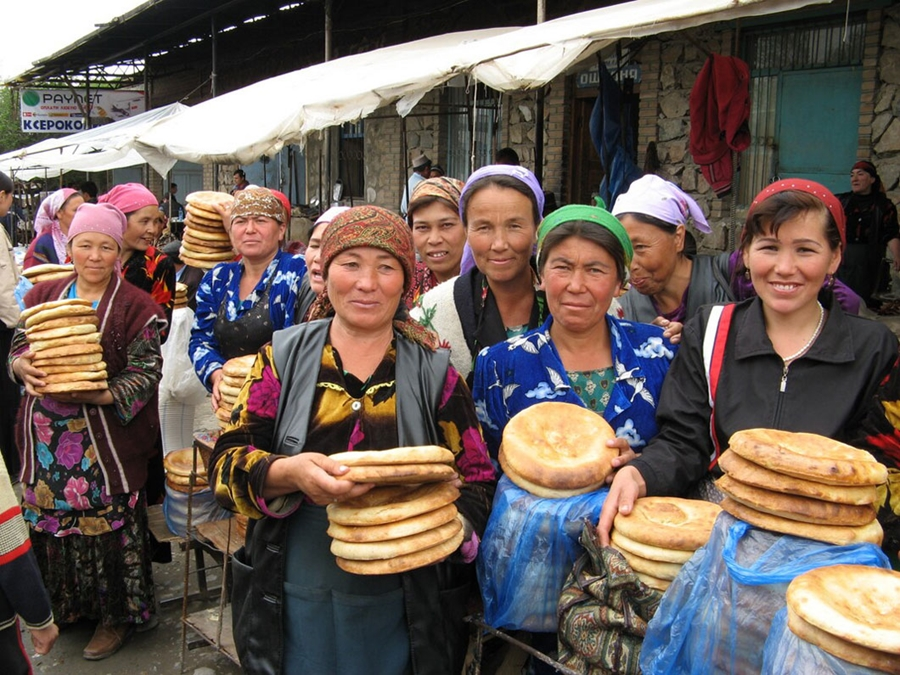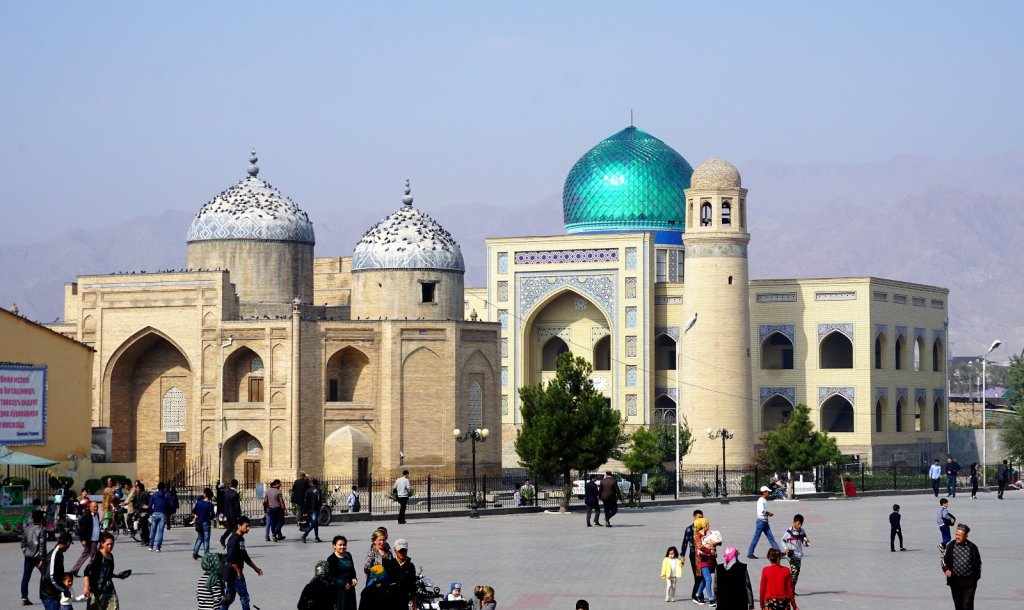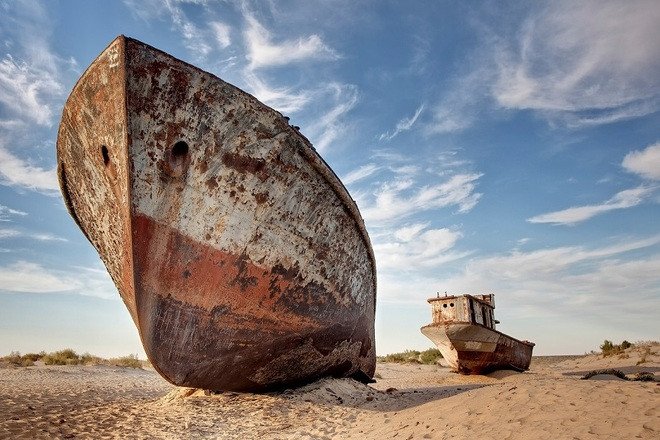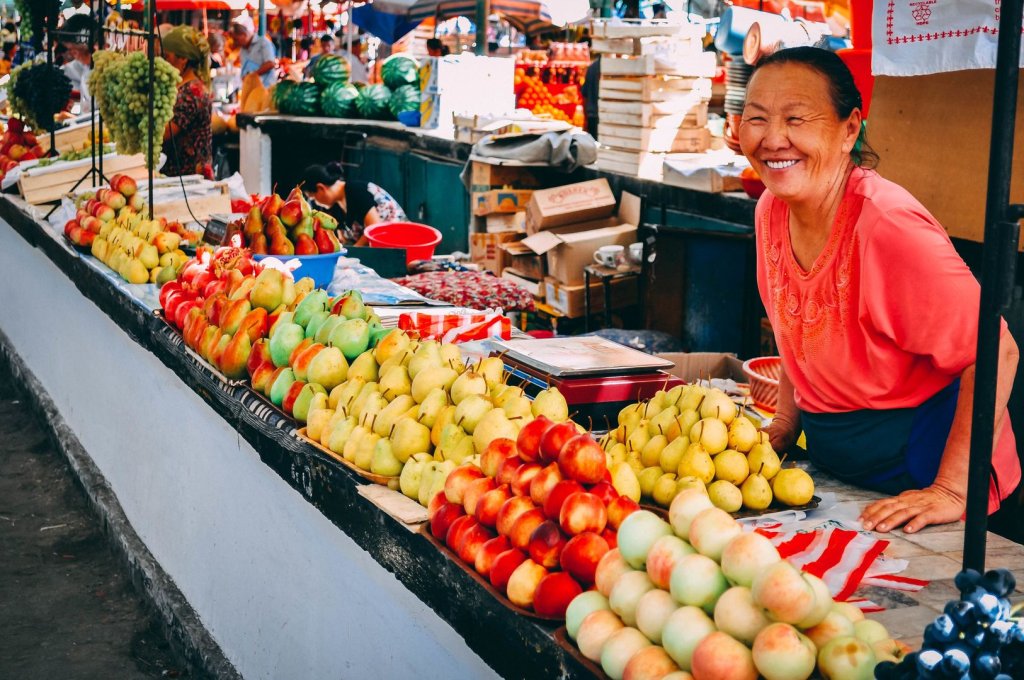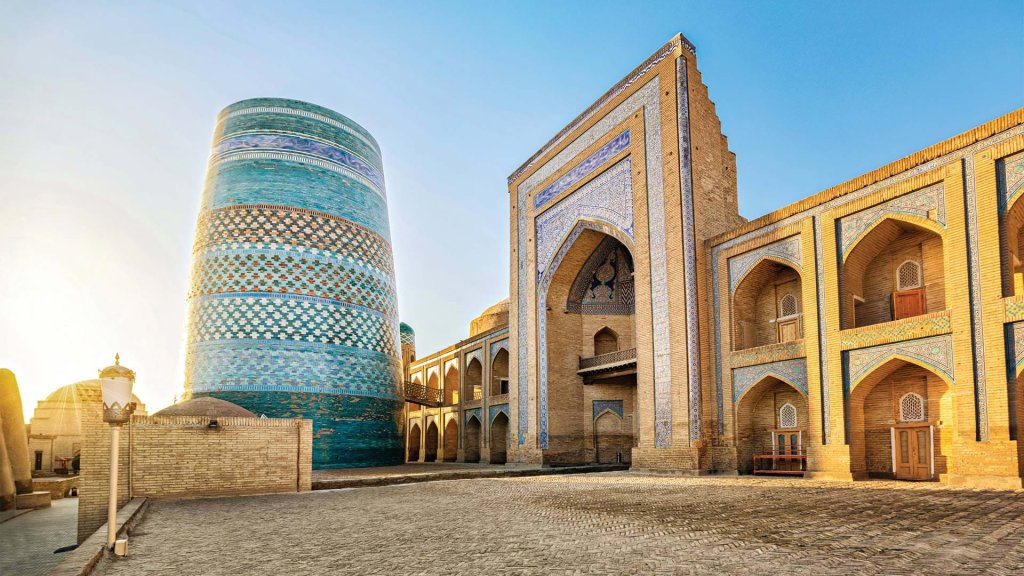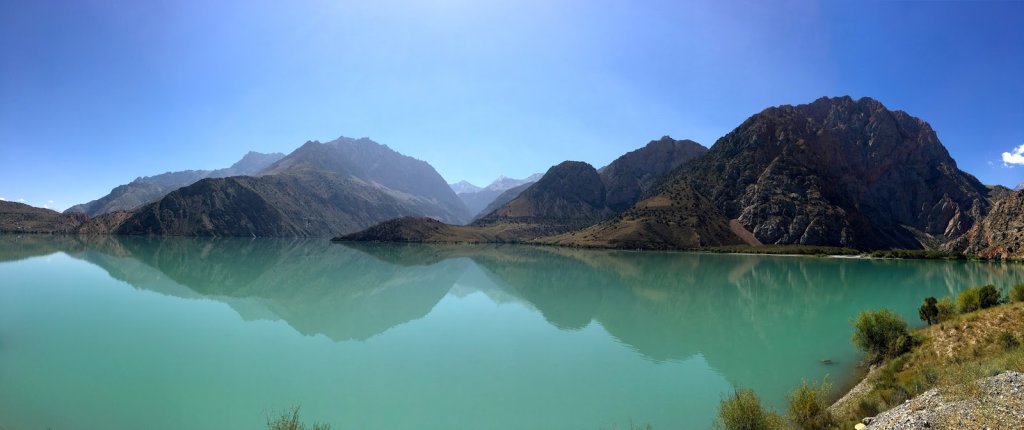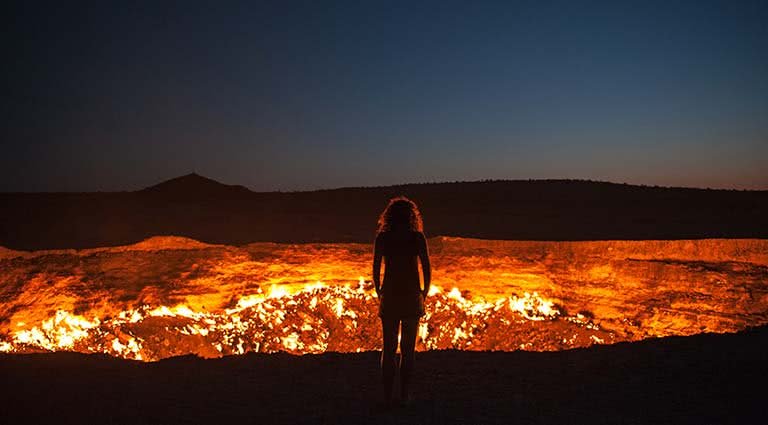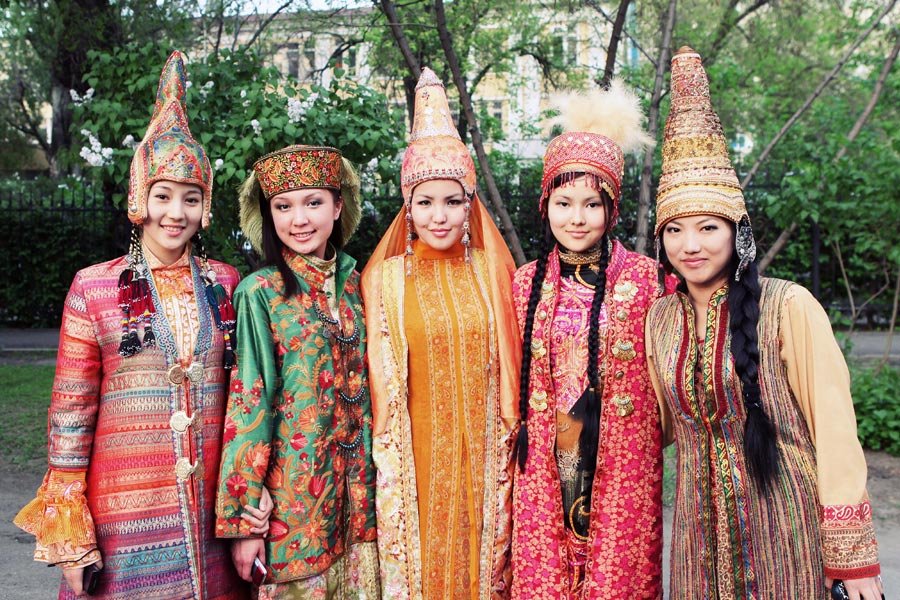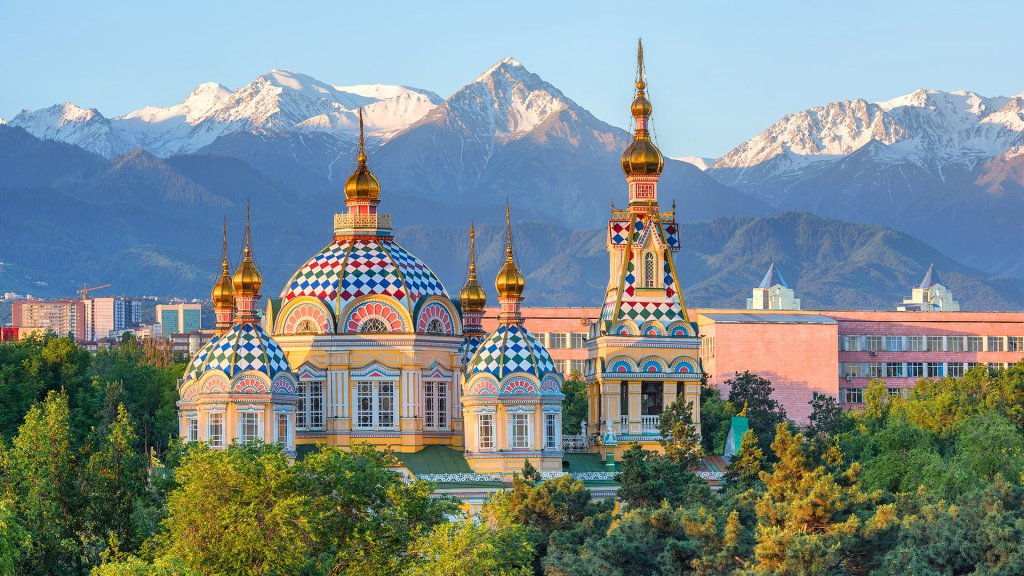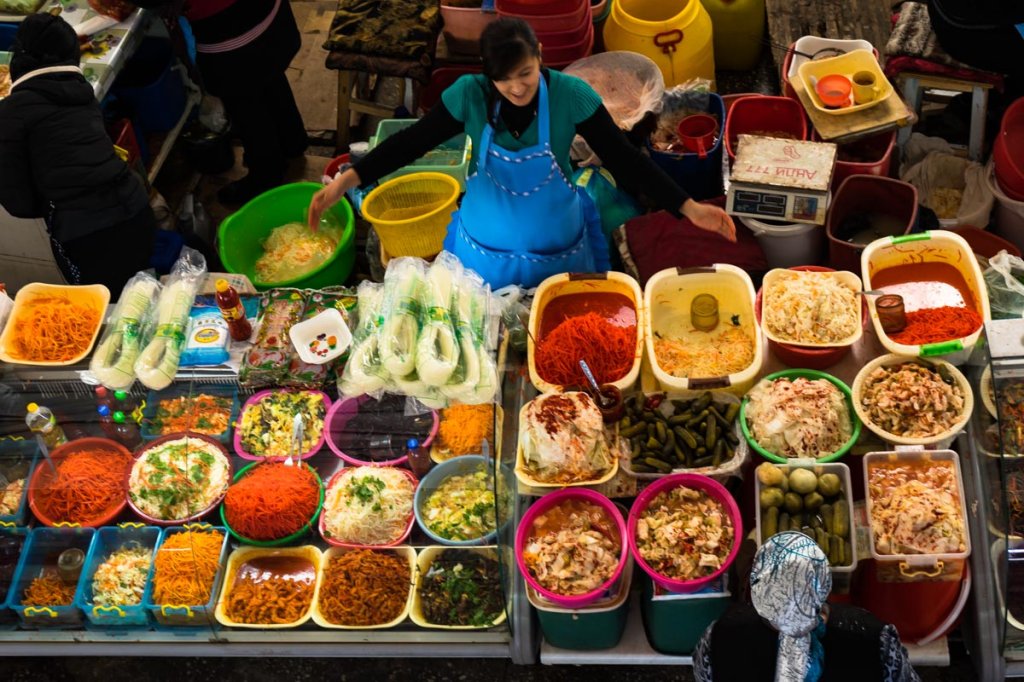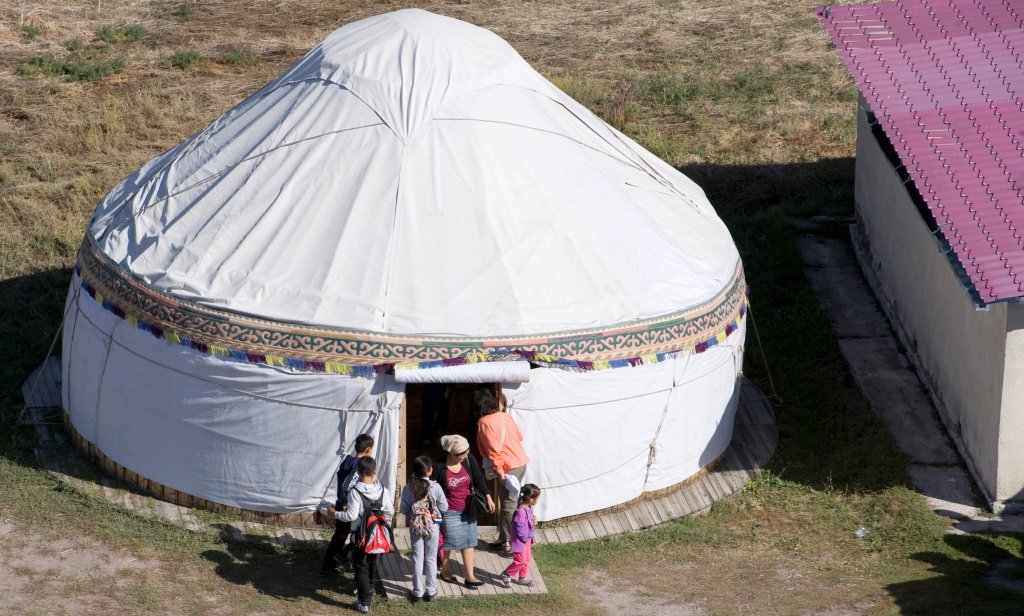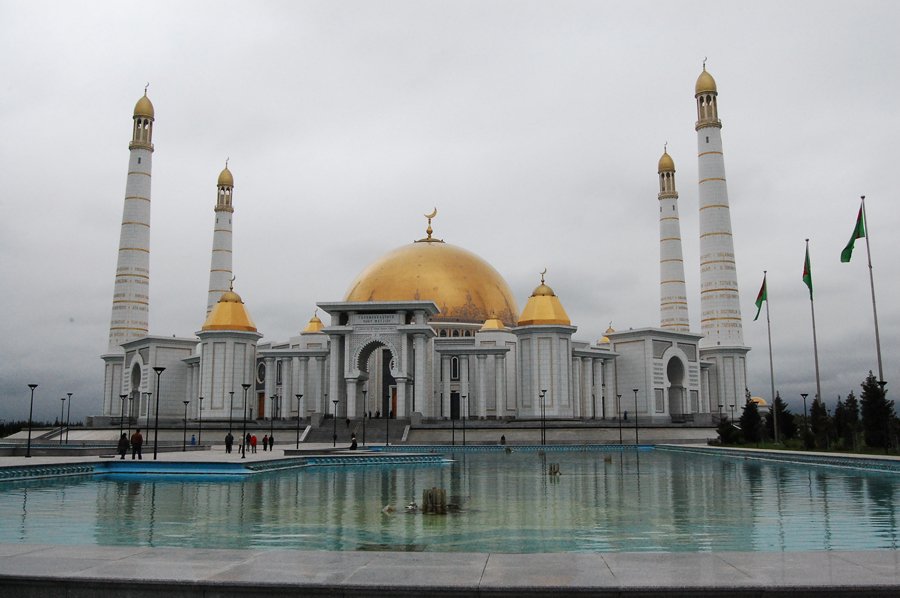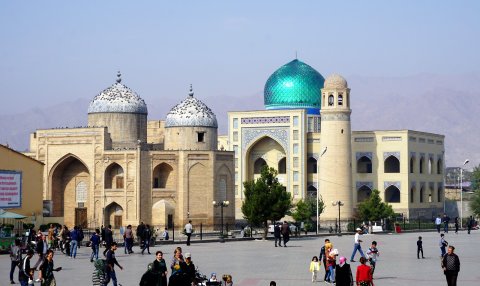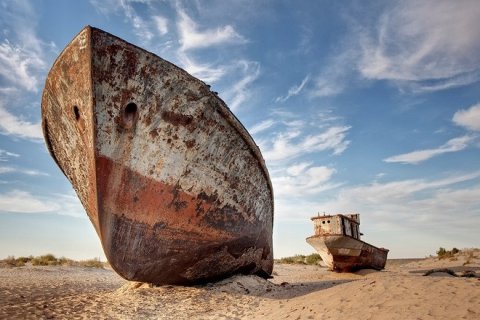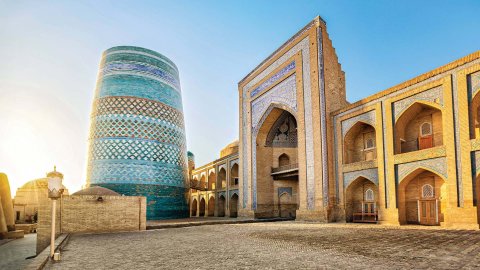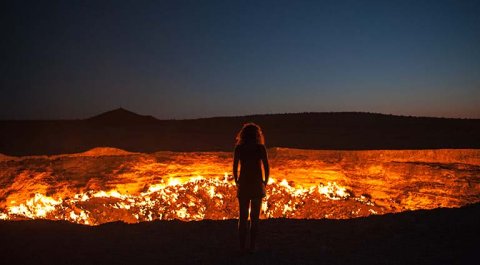Day 1: Ashgabat (Turkmenistan)
As you arrive Ashgabat International Airport our Flo Tours Representative will be waiting for you to meet and transfer you to our tour hotel
Day 2: Ashgabat (Turkmenistan) [B, L, D]
Explore Ashgabat with a day-long tour that includes the National Museum of History and Ethnography, the Arch of Neutrality, and a visit to ancient Nisa, a UNESCO World Heritage Site. Nisa was one of the earliest and most important cities of the Parthian Empire, which dominated this region from the 3rd century BCE to the 3rd century CE. End the day with a welcome dinner with fellow travelers to celebrate the beginning of the journey. Spend the night in Ashgabat.
Day 3: Ashgabat - Mary - Ashgabat [B, L, D]
Take an early morning flight (9:40 am-10:20 am) to Mary and drive to Merv, another UNESCO World Heritage Site. The remains of an array of towns whose city walls enclose nearly 2,500 acres stretch across the vast flat landscape. Merv has a rich history, with archaeological surveys revealing that a village existed here as far back as the 3rd millennium BCE. The Ancient Persians developed the city in the 6th century BCE and renamed it Alexandria under Alexander the Great. Merv was once the Silk Road's main trading route between Bukhara in the 12th century and was reputed to be the world's largest city before the Mongol invasion. After exploring the extensive remains, visit the museum that exhibits archaeological finds from sites excavated in the Mary oasis, including material from the Bronze Age sites of Gonur Depe and Togoluk, along with ancient Merv. Return to Mary for the evening flight (7:00 pm-7:40 pm) back to Ashgabat. Enjoy dinner and spend the night in Ashgabat.
Day 4: Ashgabat - Dashoguz - (Shavat Border) Khiva (Turkmenistan/Uzbekistan) [B, L, D]
Fly to Dashoguz (9:45 am-10:20 am) and drive to Konye-Urgench, a UNESCO World Heritage Site that was once the capital of the Khorezm region and part of the Achaemenid Empire. This old town was a major trade center on the Silk Road from the 10th to 14th centuries and contains several monuments, including a mosque, the still-standing gates of a caravanserai (an ‘inn' for caravans), fortresses and fortification walls, several graceful mausoleums, and a brick minaret with delicate geometric designs that towers almost 200 feet into the sky. After exploring this magnificent city, drive to the border, complete border formalities, cross into Uzbekistan (3:00 pm), meet your driver, and proceed to Khiva. Enjoy dinner and spend the night in Khiva.
Day 5: Khiva [B, L, D]
Discover the old walled city of Khiva, which was once the capital of the Kingdom of Khorezm and the last resting place for caravans before crossing the desert towards Iran. Founded in 900 AD, it was conquered by Mongols in the early 13th century, invaded by Turks in the 1400s, and became part of Russia in the 1800s. Khiva's outer city, Dishan Kala, was once protected by earthworks with eleven gates, and Ichan Kala, the inner section, still retains its enormous enclosure wall. Khiva is a remarkable open-air museum of history and architecture, and the first site in Uzbekistan to be placed on the UNESCO World Heritage List. The historic district contains over fifty monuments as well as many traditional houses. Djuma Mosque, originally built in the 10th century, was rebuilt later using over one hundred exquisitely carved wooden columns. Sheikh Mukhtar-Vali Complex, a mausoleum built in the 16th century, is famous for its beautiful incised wooden doors. Kunya Ark was the stronghold-palace where the Khans lived from the 17th to 19th centuries and housed the harem. The magnificent 19th century Tash-Hauli Palace was constructed around three courtyards with walls covered with striking azure tiles and brightly painted ceilings. Spend the day exploring this fascinating town. Enjoy dinner and spend the night in Khiva.
Day 6: Khiva-Bukhara [B, L, D]
This morning, you will embark on a journey to the great city on your Uzbek itinerary, Bukhara. The drive today will take you through the vast and awe-inspiring Kyzyl Kum, or Red Sand, Desert. This is the same route that was once taken by loaded Silk Road camel caravans, which were often targeted by brigands who sought to plunder their riches. Along the way, take a moment to marvel at the Amu Darya River, which was once known as the Oxus. This river loosely parallels the Uzbek-Turkmen border and is a sight to behold. You will arrive in Bukhara just in time for dinner and an overnight stay. Overnight in Bukhara.
Day 7: Bukhara [B, L, D]
After breakfast, you will embark on a full-day Bukhara experience. Located on the Silk Road and more than 2,000 years old, Bukhara has long been a focal point of trade, learning, culture, and religion. The most complete example of a medieval city in Central Asia, this breathtakingly beautiful city is like a whimsy from the Tales of Arabian Nights. You will spend two full days exploring this UNESCO World Heritage site and will seldom be out of sight of ever more stunning monuments. The Old Town in Bukhara has a unified feel, drawn together by a central reflecting pool and plaza, by commonality in the structure of the domed bazaars and by the major monuments ringing the Old Town, the Kalon Assembly, the Zindan Prison, and the Ark Citadel.
Then walk to the Ismail Samani Mausoleum. The 10th century resting place of Ismail Samani, founder of the Persian Samanid Dynasty, is detailed with sixteen different styles of brickwork. The Chashma Ayub Mausoleum, visited next, is not a true mausoleum, but a site visited by a holy person. You will then visit the nearby Kukeldash Madrassah, the largest of Central Asia's Koran schools, which dates from 1417. Stroll through the capmaker and spice bazaars and then meander past street-level mosques and madrasa. In the evening, you will enjoy a traditional Uzbek performance along with dinner at a former madrassah. Overnight in Bukhara.
Day 8: Bukhara - Samarkand [B, L, D]
Embark on a full-day Bukhara experience. Located on the Silk Road and more than 2,000 years old, Bukhara has long been a focal point of trade, learning, culture, and religion. The most complete example of a medieval city in Central Asia, this breathtakingly beautiful city is like a whimsy from the Tales of Arabian Nights. You will spend two full days exploring this UNESCO World Heritage site and will seldom be out of sight of ever more stunning monuments. The Old Town in Bukhara has a unified feel, drawn together by a central reflecting pool and plaza, by commonality in the structure of the domed bazaars and by the major monuments ringing the Old Town, the Kalon Assembly, the Zindan Prison, and the Ark Citadel.
In the afternoon, you can continue your Bukhara sightseeing with a half-day tour. Admire the early 19th century Chor Minor Madrassah, whose four slender, blue-topped minarets give it their name. Next, continue to Lyabi-Hauz Plaza, located in the heart of the old town. With the feel of a true oasis in an oasis town, the plaza is at the center of Bukhara's old town and is – as it has been throughout history – a place to meet friends, to eat, to drink, and to relax in the shade and enjoy free time at leisure.
After a late lunch, you will transfer to Samarkand via coach (3-31/2 hrs.). Upon arrival, you will be transferred to your hotel. Dinner and overnight in Samarkand.
Day 9: Samarkand - Shakhrisabz - Samarkand [B, L, D]
Today, you will venture outside of Samarkand and drive to Shakhrisabz, another UNESCO World Heritage Site. Here, the 14th century conqueror Timur, known in the west as Tamerlane, took forty years to construct his palace. The exquisite beauty of the enormous iwan, or monumental entryway, is all that remains of the once huge Ak Saray Palace, but still broadcasts the wealth and power of the ruler.
In the afternoon, you can visit the sprawling Urgut Bazaar in Samarkand. This is one of the best places in the country to buy jewelry, suzani, and antique clothing. The bazaar is less touristy than other markets in the region, so you can find items serving the needs of the local population. The market largely retains its original nature and is a great place to experience the local culture and meet new people. Dinner and overnight in Samarkand.
Day 10: Samarkand - Tashkent [B, L, D]
Today, you will spend the day exploring Samarkand, a UNESCO World Heritage city. Begin your tour at the fabled Registan Square, which is dominated by three imposing monuments that are masterpieces of Islamic architecture. The Ulugh Beg Madrasa, built by the peaceful ruler for which it was named, was a famous theological school for the sons of wealthy families. Over the entrance way arch is a mosaic panel decorated with stylized geometric forms. The imposing entrance portal of the XVII Century Shir Dor Madrasah depicts lion-like tigers pursuing gazelles below human-faced rising suns, a zoomorphic motif that mysteriously violates orthodox Islamic conventions. The Tilla Kari Madrasa and Mosque was conceived as the last, largest, and most embellished structure of Registan Square and encompasses extravagant gilt decoration in the mosque's domed chamber.
Located directly behind Shir Dar, Chorsu was the medieval commercial center. Nearby Gur-Emir Mausoleum was built for Tamerlane's beloved grandson, Muhammad Sultan. When he died at an early age, Tamerlane ordered this mausoleum built for his burial. In 1405 Tamerlane died in a nearby city and his body was brought here since it was closer than his mausoleum at Shahrisabz.
Ulugh Beg was Tamerlane's grandson; he was an astronomer and a prince, the governor of Samarkand. This intellectual ruler created an amazing observatory in 1428 that housed the largest 90-degree quadrant the world had ever seen, and he constructed a three-story building to support and house it. His observatory influenced subsequent Islamic astronomy, and his star atlas, constructed from observations at Samarkand, was the first original astronomical publication since Ptolemy. It survives today as one of the great artifacts of astronomy and culture, not just of Central Asia but of the world. You can view this and the excellent onsite museum. In the late afternoon, you will board your train to Tashkent. Upon arrival at Tashkent, you will be transferred to your hotel. Dinner and overnight in Tashkent.
Day 11: Tashkent [B, L, D]
Tashkent is a city steeped in history and culture, with many historic monuments that are a testament to its rich past. Your explorations begin at Independence Square, the largest city quadrangle in the former Soviet Union. Its most prominent feature is a globe with a map of Uzbekistan that replaces a 30-meter-tall statue of Lenin, a poetic expression of the birth of the nation.
Next, proceed to Navoi Theatre Square, where the opera house was built by the same architect who designed Lenin's Tomb in Moscow. The square is named after Alisher Navoi, a 15th-century poet and statesman who is considered the father of Uzbek literature.
Then, you can see the Crafts Center, where traders have plied their goods for centuries. Here, you can find a wide range of traditional Uzbek handicrafts, including ceramics, textiles, and jewelry. Also included in our itinerary a visit the Abdul Kassim Madrassah, a beautiful example of Islamic architecture that dates back to the 19th century. The madrassah is named after Abdul Kassim, a noted intellectual of his time.
Finally, we will end your tour at one of the most remarkable medieval architectural monuments, the Barak Khan Madrasah. This beautiful building is richly decorated with engravings, gilt, and glazed mosaic, and is a testament to the city's rich cultural heritage. Overnight in Tashkent.
Day 12: Tashkent - (Oybek Border) Khujand - Dushanbe (Uzbekistan/Tajikistan) [B, L, D]
Leave Tashkent for Tajikistan and on to border city of Tajikistan, Khujand, the site of another ancient Persian city, dating back about 2,500 years. It was conquered by the Arabs in the 8th century CE and was besieged and then destroyed by the army of Genghis Khan in the 13th century. Located on the Great Silk Road, and connecting Samarkand with the Fergana Valley, Khujand enjoyed a favorable geopolitical location and significant transport importance.
Here, you can visit the Historical Museum of Sughd, which is located next to a restored portion of the Khujand Fortress. The museum features a wide range of artifacts and displays related to the history of the Sughd Region, including rare Tajiki handwoven rugs, Tajiki embroidery, and costumes. You can also visit the Muslihiddin Medressa, a beautiful example of Islamic architecture that dates back to the 16th century. Dinner and overnight at Dushanbe.
Day 13: Dushanbe [B, L, D]
Dushanbe, which means “Monday” in Tajik, developed on the site of a Monday marketplace village. Today, it is a rapidly developing metropolis. Your tour of the city this morning includes the Tajikistan National Museum, which is home to a wide range of exhibits related to the history and culture of Tajikistan. You can also visit the Museum of Ethnography, which features a wide range of artifacts and displays related to the country's diverse ethnic groups.
You can also explore the Shah Mansur Bazaar, which is one of the largest and most vibrant markets in the city. Here, you can find a wide range of goods, including textiles, spices, and handicrafts. In the afternoon, you will travel outside the city to see Hissar Fortress, the remains of an 18th-century fort that was occupied until 1924. The fortress is located on a hill overlooking the surrounding countryside and offers stunning views of the area. Dinner and overnight in Dushanbe.
Day 14: Dushanbe - Almaty (Tajikistan/Kazakhstan) [B,L,D]
We will take a morning flight from Dushanbe to Almaty. Upon arrival in Almaty, you will be transferred to your hotel. You will have the rest of the day free to explore the city at your leisure. Overnight in Almaty.
Day 15: Almaty [B, L, D]
Full day of sightseeing in Almaty. First visit Panfilov Park named after the 28 Panfilov Heroes who died defending Moscow during World War II. The park is home to the Ascension Cathedral, which is one of the few surviving tsarist-era buildings in the city. Then comes the National Musical Instruments Museum dedicated to the traditional musical instruments of Kazakhstan and Central Asia. Here, you can see a wide range of instruments, including the dombra, kobyz, and saz. Next, Central State Museum: This museum is one of the largest museums in Central Asia and features exhibits related to the history and culture of Kazakhstan. Almaty Green Bazaar is one of the largest and most vibrant in the city. Here, you can find a wide range of goods, including fresh produce, spices, and handicrafts. We will take a cable car to Kok Tobe which offers panoramic views of the city and is a popular spot for tourists. You can take a cable car to the top of the hill and enjoy the views from the observation deck. Zenkov Cathedral, a beautiful wooden cathedral, is one of the most famous landmarks in Almaty. It was built in 1907 and is one of the few surviving wooden buildings in the city. Finally pay a visit to St. Nicholas Cathedral: located in the heart of the city and is a popular spot for tourists and locals alike. Overnight in Almaty.
Day 16: Almaty - Bishkek (Kazakhstan/Kyrgyzstan) [B, L, D]
We will start the day with a scenic drive, depart from Almaty and drive to Bishkek via a newly built highway. Along the way, you can enjoy the natural landscapes of the region.
In the afternoon, you can visit the following places in Bishkek first we will Central Museum dedicated to the history and culture of Kyrgyzstan and features a wide range of exhibits related to the country's past. Then walk to the nearby Independence Square: known as one of the most important landmarks in the city and is home to a number of important government buildings. From there we will have a short walk to Philharmonic Square that has been home to the Kyrgyz State Philharmonic Orchestra for decades and is a popular spot for concerts and other cultural events. Also included in our tour today is the University Boulevard which is lined with trees and is a popular spot for walking and relaxing and TSUM shopping center known as one of the largest in the city housing to a wide range of stores and restaurants. Overnight in Bishkek.
Day 17: Bishkek - Issyk Kul - Karakol [B,L,D]
Drive to Karakol, a town situated in the east of the lake area, at the foot of the most picturesque mountains of Tian Shan. The way passes along the south shore of Issyk Kul. Follow the way along the shore of Issyk Kul until the town of Karakol.
On the way, you can stop in Kyzyl Tuu, a yurt maker's village, and visit a yurt master's home. You can also visit the Djety Oguz canyon on the way. Djety Oguz in Kyrgyz means “Seven Bulls”. This picturesque gorge is named so because of the red rocky sand formations covered with forests of Tien Shan Spruces. Overnight in Karakol.
Day 18: Karakol - Cholpon Ata - Bishkek [B, L, D]
Today we will start our city tour in Karakol. A short drive will take us to nearby Russian Orthodox Holy Trinity Cathedral from our hotel. This beautiful wooden cathedral was completed in 1895 and used as an officers' club during Soviet Times. It is now restored and in use again as a church. Then another short drive and arrive in where Wooden Mosque: This mosque was built entirely without nails by Chinese artisans between 1907 and 1910 for the local Dungans (Muslims of Chinese origin who fled China during the aftermath of the XIX Century Hui Minorities' War). Our next destination will be the Museum of Nikolay M. Przhevalsky. This museum is dedicated to the outstanding Russian explorer of the Asian continent. Here, you can learn about his life and work and see a wide range of exhibits related to his travels.
After your visit to Karakol, you will drive to the city of Cholpon Ata, situated on the northern shore of Issyk Kul Lake. Upon arrival, you can visit the Petroglyphs site, which is a temple in the open air of Scythians and Hungsuns civilizations from the VIII to IX Century B.C. until the III to IV Century A.D. You will then drive to Bishkek for your farewell dinner and overnight stay.
Day 19: Departure From Bishkek (Kyrgyzstan) [B]
Have your breakfast at hotel restaurant and check out of your hotel. This marks the end of our services for this trip. We look forward to serving you again on another off-the-beaten-path adventure in the future.
